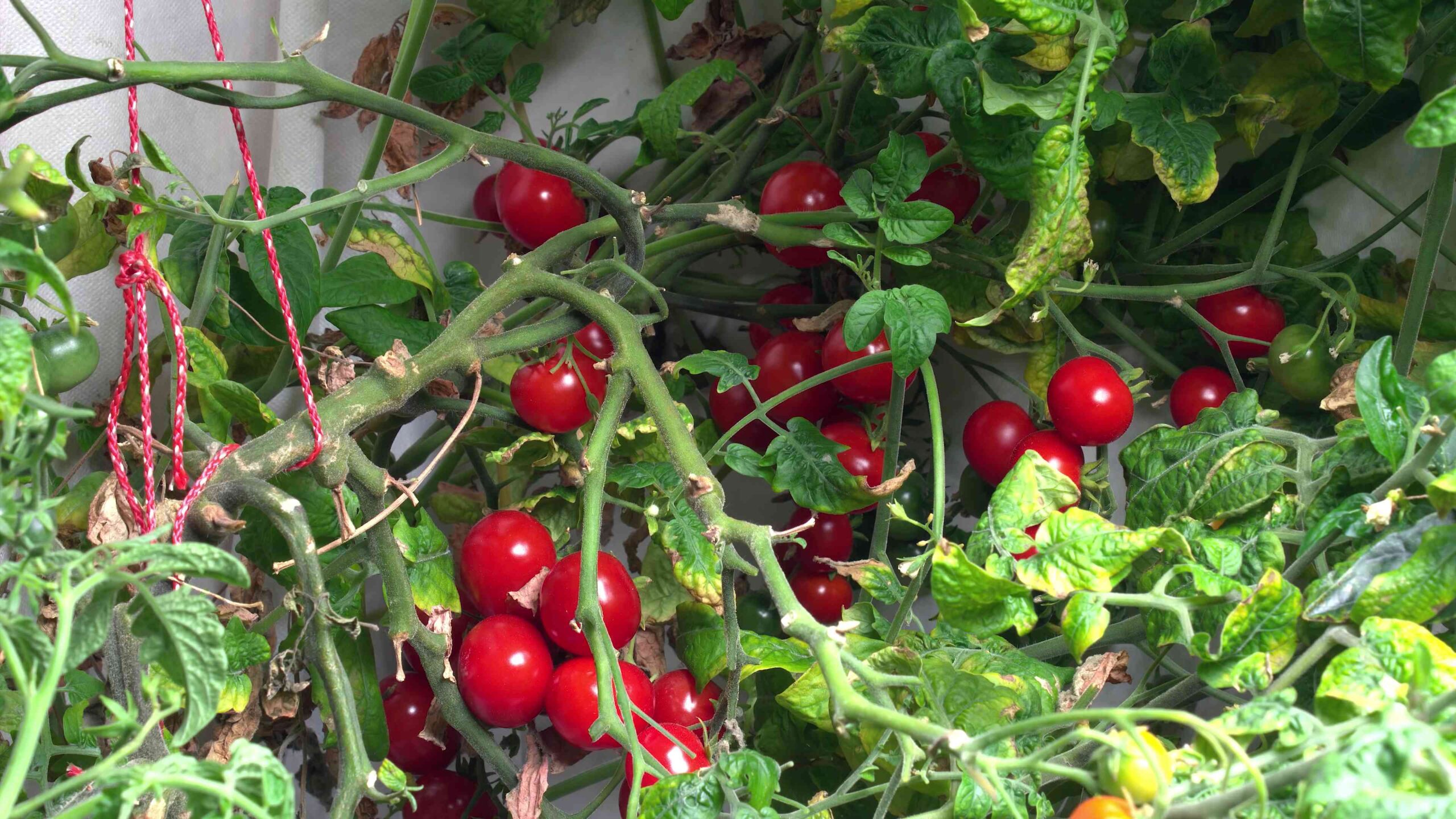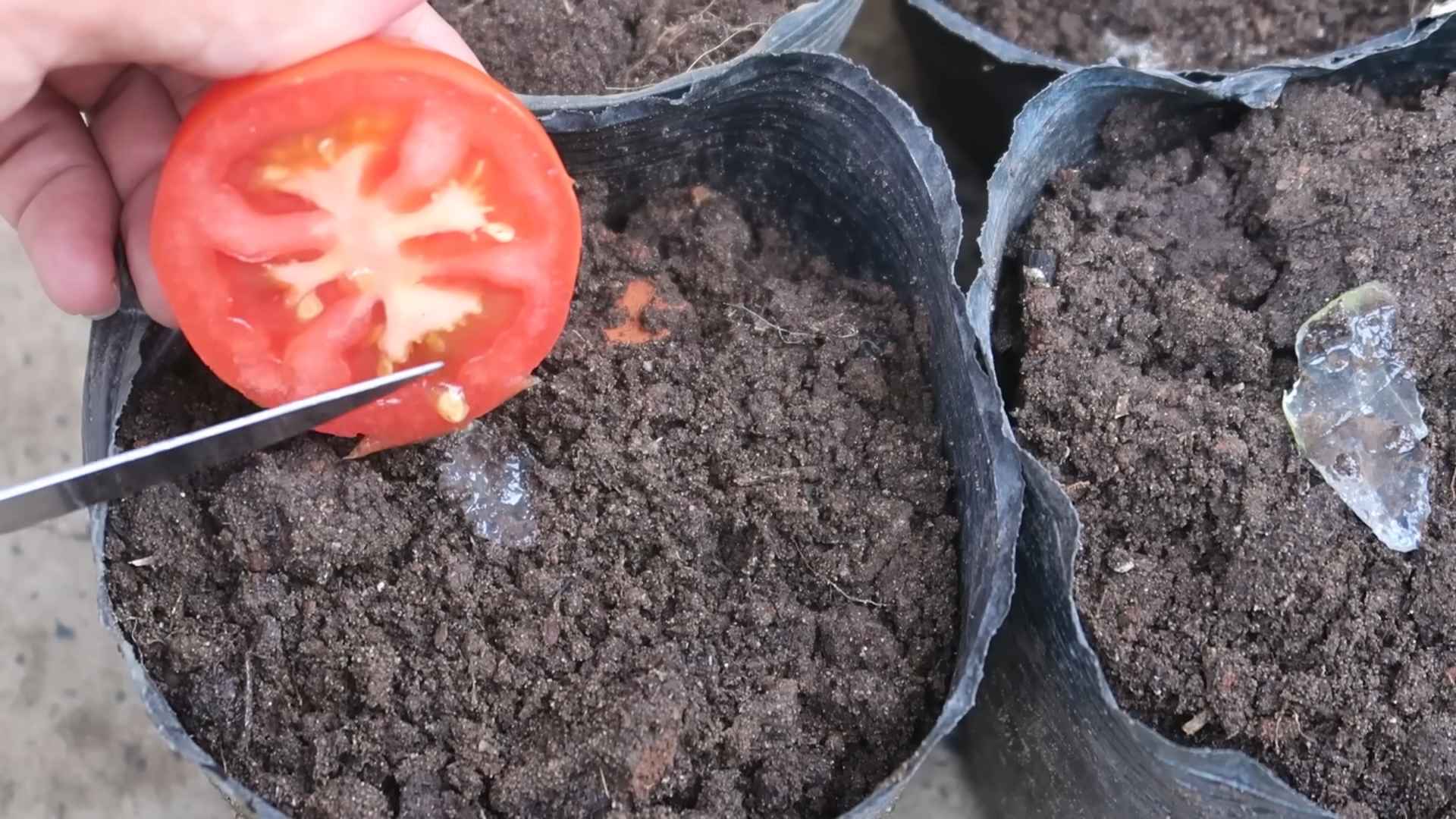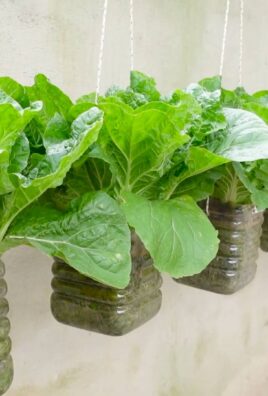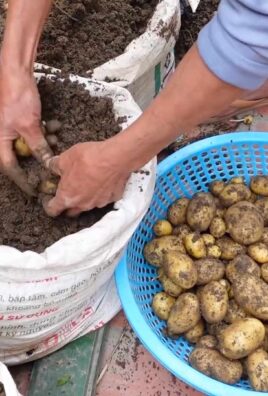Grow Tomatoes at Home – imagine plucking a sun-ripened, juicy tomato straight from your own garden, bursting with flavor unlike anything you’ve ever tasted from the store. Sounds idyllic, right? Well, it’s absolutely achievable, even if you think you don’t have a green thumb! For centuries, cultivating tomatoes has been a cherished tradition, dating back to the Aztecs and Incas who first domesticated these vibrant fruits. From humble beginnings in South America, tomatoes have journeyed across the globe, becoming a staple in cuisines worldwide.
But let’s be honest, sometimes growing your own tomatoes can feel a little daunting. Pests, diseases, and unpredictable weather can throw a wrench in your plans. That’s where these DIY tricks and hacks come in! I’m going to share some simple, yet effective, methods to help you grow tomatoes at home successfully, regardless of your experience level or garden size. Whether you have a sprawling backyard or just a sunny balcony, these tips will empower you to cultivate a thriving tomato patch and enjoy the unparalleled satisfaction of homegrown goodness. Get ready to ditch those bland supermarket tomatoes and embrace the deliciousness of your own harvest!

Growing Tomatoes Like a Pro: My DIY Guide to a Bountiful Harvest
Okay, tomato lovers, gather ’round! I’m going to share everything I know about growing juicy, delicious tomatoes right in your own backyard (or even on your balcony!). Forget those bland, store-bought tomatoes – we’re talking homegrown flavor that will knock your socks off. This guide is packed with tips and tricks I’ve learned over the years, so get ready to get your hands dirty!
Choosing the Right Tomato Variety
Before we even think about planting, we need to pick the right tomato variety. This is crucial because different tomatoes thrive in different climates and have different uses.
* Determinate vs. Indeterminate: This is the first big decision. Determinate tomatoes grow to a certain size and then produce all their fruit at once, making them great for canning. Indeterminate tomatoes keep growing and producing fruit throughout the season, giving you a continuous harvest. I personally prefer indeterminate varieties because I love having fresh tomatoes all summer long.
* Heirloom vs. Hybrid: Heirloom tomatoes are open-pollinated varieties that have been passed down through generations. They often have unique flavors and colors, but can be more susceptible to diseases. Hybrid tomatoes are bred for specific traits like disease resistance and higher yields. I usually grow a mix of both!
* Consider Your Climate: Some tomatoes are better suited for cooler climates, while others thrive in hot weather. Check the seed packet or plant label for information on the ideal growing conditions for each variety.
* Think About Your Space: If you’re growing in containers, you’ll want to choose smaller, bush-type varieties. If you have plenty of space in your garden, you can go for larger, vining varieties.
* My Personal Favorites: Roma (determinate, great for sauces), Beefsteak (indeterminate, huge and juicy), Cherry (indeterminate, perfect for snacking), and Early Girl (indeterminate, early producer).
Starting Your Tomato Seeds (or Buying Seedlings)
You have two options here: start your own seeds indoors or buy seedlings from a nursery. Starting seeds gives you more control over the varieties you grow and can save you money, but it requires a bit more effort.
Option 1: Starting Seeds Indoors (6-8 Weeks Before Last Frost)
* Materials You’ll Need:
* Tomato seeds
* Seed starting trays or small pots
* Seed starting mix (not regular potting soil!)
* Grow lights (or a very sunny window)
* Heat mat (optional, but helpful)
* Spray bottle
* Watering can
* Step-by-Step Instructions:
1. Prepare Your Trays: Fill your seed starting trays or pots with seed starting mix. Gently tap the trays to settle the soil.
2. Sow the Seeds: Make a small indentation (about 1/4 inch deep) in the soil and drop in 2-3 tomato seeds. Cover the seeds with a thin layer of soil and gently water with a spray bottle.
3. Provide Warmth and Light: Place the trays on a heat mat (if using) and under grow lights. If you’re using a sunny window, make sure it gets at least 6 hours of direct sunlight per day.
4. Keep the Soil Moist: Water the seedlings regularly with a spray bottle, keeping the soil consistently moist but not soggy.
5. Thin the Seedlings: Once the seedlings have their first true leaves (the second set of leaves), thin them out by snipping off the weaker seedlings at the soil line. Leave only the strongest seedling in each cell or pot.
6. Harden Off the Seedlings: About a week before you plan to transplant the seedlings outdoors, you need to “harden them off.” This means gradually exposing them to outdoor conditions to help them adjust. Start by placing them outside for an hour or two each day, gradually increasing the amount of time they spend outdoors.
Option 2: Buying Seedlings from a Nursery
* Choosing Healthy Seedlings:
* Look for seedlings that are about 6-8 inches tall.
* Choose plants with thick, sturdy stems and healthy green leaves.
* Avoid plants that are yellowing, wilting, or have spots on their leaves.
* Check the roots to make sure they’re not root-bound (tightly circling the pot).
* Select plants that are labeled with the variety name and any other relevant information.
Preparing Your Garden Bed or Containers
Tomatoes need plenty of sunlight, well-drained soil, and adequate space to grow.
* Choosing a Location: Select a spot in your garden that gets at least 6-8 hours of direct sunlight per day.
* Preparing the Soil: Tomatoes prefer slightly acidic soil with a pH of 6.0-6.8. Amend the soil with compost or other organic matter to improve drainage and fertility. I like to add a handful of bone meal to each planting hole to provide phosphorus, which is essential for root development.
* Container Gardening: If you’re growing tomatoes in containers, choose pots that are at least 18 inches in diameter and have drainage holes. Use a high-quality potting mix that is specifically formulated for vegetables.
Transplanting Your Tomato Seedlings
Once the danger of frost has passed and the soil has warmed up, it’s time to transplant your tomato seedlings into the garden or containers.
* Step-by-Step Instructions:
1. Dig a Hole: Dig a hole that is deep enough to bury the bottom third of the tomato seedling’s stem. This will encourage the plant to develop more roots along the buried stem.
2. Add Fertilizer: Add a handful of slow-release fertilizer to the bottom of the hole.
3. Plant the Seedling: Gently remove the seedling from its container and place it in the hole. Backfill the hole with soil and gently firm the soil around the base of the plant.
4. Water Thoroughly: Water the seedling thoroughly after planting.
5. Add Support: Install a tomato cage or stake to support the plant as it grows. This is especially important for indeterminate varieties.
6. Mulch: Apply a layer of mulch around the base of the plant to help retain moisture and suppress weeds. I like to use straw or shredded leaves.
Caring for Your Tomato Plants
Tomatoes need regular watering, fertilizing, and pruning to thrive.
* Watering: Water your tomato plants deeply and regularly, especially during hot, dry weather. Aim to water at the base of the plant to avoid wetting the foliage, which can lead to disease.
* Fertilizing: Fertilize your tomato plants every 2-3 weeks with a balanced fertilizer. Look for a fertilizer that is specifically formulated for tomatoes.
* Pruning: Pruning tomato plants can help improve air circulation, reduce disease, and encourage fruit production. Remove suckers (the small shoots that grow between the main stem and the branches) to direct the plant’s energy towards fruit production.
* Pest and Disease Control: Keep an eye out for common tomato pests and diseases, such as aphids, tomato hornworms, and early blight. Use organic pest control methods whenever possible. I like to use insecticidal soap for aphids and hand-pick tomato hornworms. For diseases, make sure your plants have good air circulation and avoid overhead watering.
Harvesting Your Tomatoes
The moment we’ve all been waiting for! Harvesting your homegrown tomatoes is one of the most rewarding parts of gardening.
* When to Harvest: Tomatoes are ready to harvest when they are fully colored and slightly soft to the touch. Gently twist the tomato off the vine.
* Storing Tomatoes: Store ripe tomatoes at room temperature for the best flavor. Avoid refrigerating them, as this can make them mealy.
Troubleshooting Common Tomato Problems
Even with the best care, you may encounter some problems along the way. Here are a few common issues and how to address them:
* Blossom End Rot: This is caused by a calcium deficiency and results in a dark, leathery spot on the bottom of the tomato. To prevent blossom end rot, make sure your soil is well-drained and add calcium to the soil before planting.
* Early Blight: This is a fungal disease that causes dark spots on the leaves. To prevent early blight, make sure your plants have good air circulation and avoid overhead watering. Remove any infected leaves.
* Tomato Hornworms: These large green caterpillars can quickly defoliate your tomato plants. Hand-pick them off the plants and drop them into a bucket of soapy water.
* Cracking: This can happen when tomatoes get too much water after a dry spell. Water your plants consistently to prevent cracking.
Growing tomatoes can be a challenging but incredibly rewarding experience. With a little bit of planning and effort, you can enjoy a bountiful harvest of delicious, homegrown

Conclusion
So, there you have it! Growing tomatoes at home, especially with these simple yet effective DIY tricks, is not just a rewarding experience; it’s a game-changer for your culinary adventures and your overall well-being. Forget those bland, store-bought tomatoes that lack the vibrant flavor and juicy texture we all crave. With a little effort and these insider tips, you can cultivate a thriving tomato garden right in your backyard, balcony, or even on a sunny windowsill.
Why is this a must-try? Because it puts you in control. You dictate the quality of your food, ensuring it’s free from harmful pesticides and bursting with natural goodness. You get to experience the sheer joy of nurturing a plant from seed to fruit, witnessing the miracle of nature unfold before your eyes. And, most importantly, you get to savor the unparalleled taste of homegrown tomatoes, a flavor that simply cannot be replicated.
But the beauty of this DIY approach lies in its adaptability. Feel free to experiment with different tomato varieties to find your favorites. Cherry tomatoes for snacking, Roma tomatoes for sauces, Beefsteak tomatoes for sandwiches – the possibilities are endless! You can also explore different growing methods, such as container gardening, raised beds, or even vertical gardening, depending on your space and preferences. Consider companion planting with basil, marigolds, or other herbs to enhance the flavor of your tomatoes and deter pests naturally.
Don’t be afraid to get your hands dirty and embrace the learning process. Gardening is a journey, not a destination. There will be challenges along the way, but the rewards are well worth the effort. Imagine the satisfaction of serving a homemade pasta sauce made with tomatoes you grew yourself, or biting into a juicy tomato sandwich bursting with flavor. These are the moments that make all the hard work worthwhile.
We wholeheartedly encourage you to try these DIY tricks for growing tomatoes at home. Start small, be patient, and don’t be afraid to ask for help. There’s a wealth of information available online and in your local community. And most importantly, have fun!
Once you’ve harvested your first batch of homegrown tomatoes, we’d love to hear about your experience. Share your tips, tricks, and triumphs in the comments below. Let’s create a community of tomato-growing enthusiasts and inspire others to embark on this rewarding journey. What varieties did you grow? What challenges did you face? What delicious recipes did you create? Your insights could be invaluable to other aspiring gardeners. So, get growing and share your story! Let’s make the world a more flavorful place, one homegrown tomato at a time.
Frequently Asked Questions (FAQ)
What are the easiest tomato varieties to grow for beginners?
For beginners, determinate tomato varieties like Roma, Celebrity, and Bush Early Girl are excellent choices. Determinate tomatoes grow to a specific size and produce most of their fruit at once, making them easier to manage. Cherry tomatoes, such as Sweet 100 or Sungold, are also relatively easy to grow and provide a continuous harvest. These varieties are generally more compact and require less pruning than indeterminate varieties.
How much sunlight do tomatoes need to grow successfully?
Tomatoes require at least 6-8 hours of direct sunlight per day to thrive. The more sunlight they receive, the better their fruit production will be. If you’re growing tomatoes indoors, supplement with grow lights to ensure they get adequate light. Insufficient sunlight can lead to leggy plants with poor fruit development.
What is the best type of soil for growing tomatoes?
Tomatoes prefer well-draining soil that is rich in organic matter. A slightly acidic soil pH of 6.0 to 6.8 is ideal. Amend your soil with compost, aged manure, or other organic materials to improve its fertility and drainage. Avoid heavy clay soils, as they can become waterlogged and hinder root growth. You can also use a high-quality potting mix specifically formulated for vegetables if growing in containers.
How often should I water my tomato plants?
Water your tomato plants deeply and regularly, especially during hot and dry weather. Aim to water at the base of the plant to avoid wetting the foliage, which can increase the risk of fungal diseases. Check the soil moisture regularly by sticking your finger about an inch into the soil. If it feels dry, it’s time to water. Container-grown tomatoes may need to be watered more frequently than those grown in the ground.
What are some common tomato plant problems and how can I prevent them?
Common tomato plant problems include blossom end rot, early blight, and tomato hornworms. Blossom end rot is caused by calcium deficiency and can be prevented by ensuring consistent watering and adding calcium to the soil. Early blight is a fungal disease that can be prevented by providing good air circulation, avoiding overhead watering, and using a fungicide if necessary. Tomato hornworms are large caterpillars that can defoliate your plants. Handpick them off the plants or use Bacillus thuringiensis (Bt), a natural insecticide.
Do I need to prune my tomato plants?
Pruning is generally recommended for indeterminate tomato varieties, as it helps to improve air circulation, promote fruit production, and prevent diseases. Remove suckers (the small shoots that grow between the main stem and the branches) to encourage the plant to focus its energy on fruit development. Determinate tomatoes typically do not require pruning.
When is the best time to harvest tomatoes?
Tomatoes are ready to harvest when they are fully colored and slightly soft to the touch. Gently twist the tomato from the vine, leaving the stem attached. The color will depend on the variety you are growing. For example, a ripe Roma tomato will be a deep red, while a ripe yellow tomato will be a vibrant yellow.
Can I grow tomatoes in containers?
Yes, tomatoes can be successfully grown in containers. Choose a large container (at least 10 gallons) with drainage holes. Use a high-quality potting mix and provide adequate sunlight and water. Container-grown tomatoes may need to be fertilized more frequently than those grown in the ground.
What kind of fertilizer should I use for my tomato plants?
Use a balanced fertilizer with a ratio of 5-10-5 or 10-10-10. Apply fertilizer according to the package instructions, typically every 2-3 weeks. You can also use organic fertilizers, such as compost tea or fish emulsion. Avoid over-fertilizing, as this can lead to excessive foliage growth and reduced fruit production.
How can I protect my tomato plants from pests and diseases organically?
There are several organic methods for protecting your tomato plants from pests and diseases. Companion planting with basil, marigolds, or other herbs can help to deter pests. Use insecticidal soap or neem oil to control aphids, whiteflies, and other common pests. Apply a copper fungicide to prevent fungal diseases. Encourage beneficial insects, such as ladybugs and lacewings, to prey on pests. Practice crop rotation to prevent soilborne diseases.





Leave a Comment